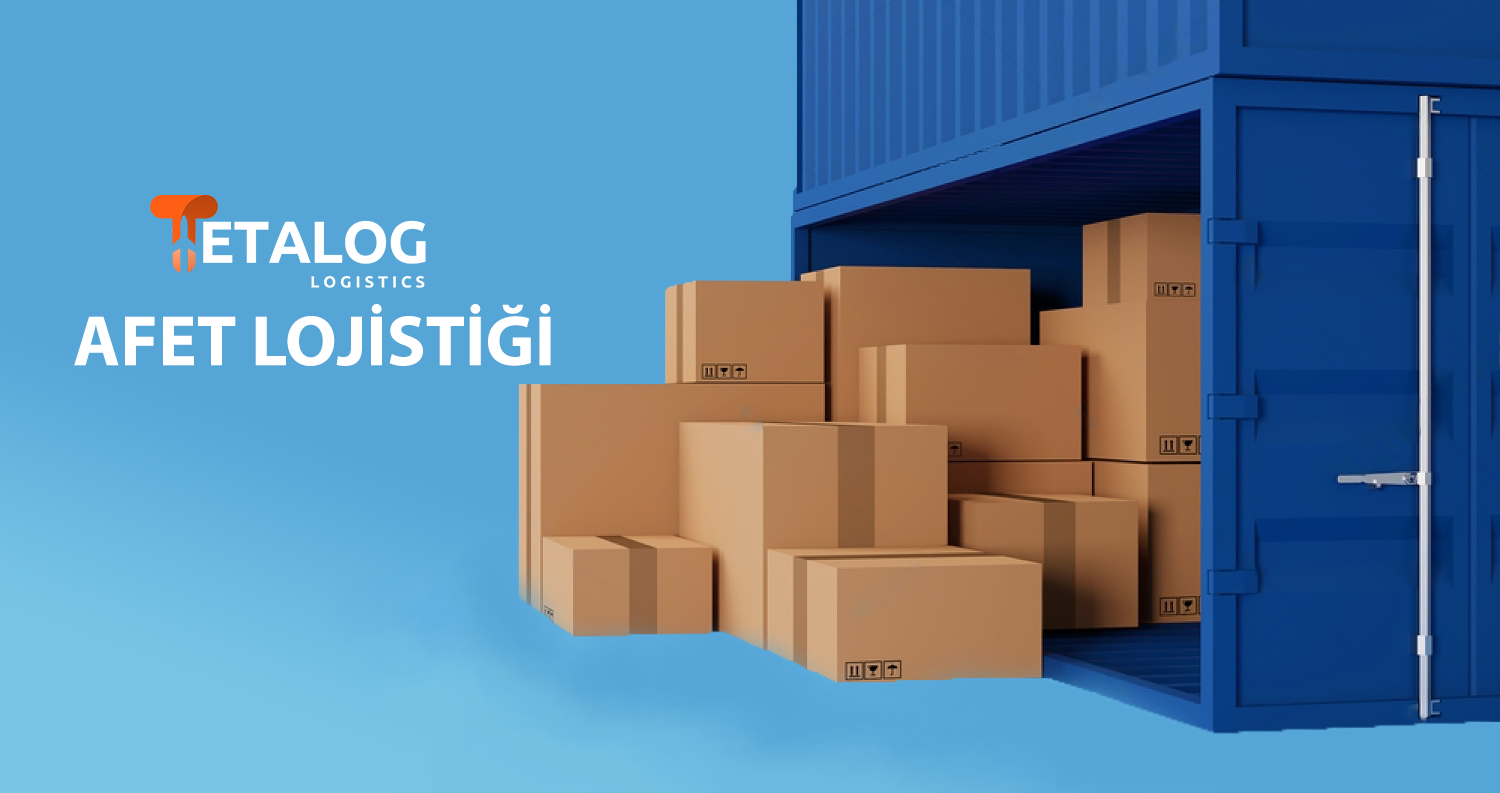
Disaster logistics, a type of logistics that involves managing the materials and resources needed after unexpected events such as natural disasters or human-made calamities. Emergency aid logistics covers processes such as collecting, storing, transporting, and distributing emergency aid materials, as well as activities like crisis planning, risk analysis, emergency preparedness, and response coordination.
Disaster logistics requires a well-planned system to act quickly, keep materials and resources in the right place at the right time for emergencies, and minimize damages caused by the disaster. Therefore, disaster logistics is an important issue worldwide, especially in regions frequently affected by natural disasters.
What Does Disaster Logistics Cover?
Humanitarian aid logistics includes managing emergency aid materials such as food, water, medicine, medical supplies, and shelter materials. To reduce the impact of disasters and make communities more resilient, pre-disaster preparedness activities are also part of disaster and emergency logistics. These activities include risk analysis, crisis planning, emergency planning, emergency training, and awareness programs. Disaster and humanitarian aid logistics require collaboration among many organizations. These include emergency management agencies, non-governmental organizations, government institutions, private sector organizations, local administrations, and international aid agencies. By working together, these organizations ensure the rapid collection, storage, and distribution of needed materials during emergencies.
Disaster logistics is used not only for natural disasters but also for human-made calamities. After events such as terrorist attacks, wars, and accidents, disaster logistics methods can be employed to manage emergency aid materials. Disaster and emergency logistics are critical for managing the materials necessary for survival and rescue. A well-planned disaster and humanitarian aid logistics system can reduce damages caused by disasters and help communities become more resilient.

The Importance of Disaster Logistics
Disaster logistics involves managing the materials and resources necessary for survival and rescue after unexpected events such as natural disasters, human-made calamities, environmental disasters, and pandemics. Therefore, emergency aid logistics is crucial for saving lives, reducing damages, and enabling rapid recovery of communities. The following reasons explain the importance of disaster logistics:
- Saving Lives: Disaster and emergency logistics ensure the timely and accurate provision of basic materials needed for survival after natural disasters or calamities. Rapid access to essentials such as water, food, medicine, medical supplies, and shelter materials is critical for saving lives.
- Reducing Damages: Disaster logistics can mitigate damages caused by disasters through activities like risk analysis and crisis planning conducted before the event. A well-organized emergency aid logistics system is essential for quick action, having materials and resources in the right place at the right time, and minimizing the impact of the disaster.
- Enhancing Community Resilience: Disaster and humanitarian aid logistics are important for making communities more resilient, including pre-disaster preparedness activities. These include risk analysis, crisis planning, emergency planning, emergency training, and awareness programs.
- Coordination and Communication: Emergency aid logistics require collaboration among many organizations. These include emergency management units, civil society organizations, government agencies, private sector entities, local administrations, and international aid organizations. Good coordination and communication enable rapid and effective intervention during emergencies.
- Post-Disaster Recovery: Disaster logistics are also vital during the recovery phase after a calamity. Proper management of materials, damage reduction, and increased community resilience can accelerate the post-disaster recovery process.
Disaster and humanitarian aid logistics are carried out to save lives, reduce damages, and make communities more resilient.
How Do Disaster Logistics Processes Progress?
Disaster logistics processes consist of three main phases: pre-disaster, during the disaster, and post-disaster.
- Pre-Disaster Phase: The pre-disaster preparedness phase includes activities aimed at preventing or minimizing disasters. This phase involves risk analysis, crisis planning, emergency planning, training, and awareness programs. Pre-disaster preparation ensures that actions during or after the disaster are more effective and efficient.
- During the Disaster Phase: This phase involves immediate response and providing necessary materials for survival at the moment the disaster occurs. During this phase, a disaster management center is established based on the type and scale of the disaster. This center coordinates among disaster management teams, healthcare workers, rescue teams, civil defense units, fire brigades, police, and other organizations.
- Post-Disaster Phase: The post-disaster phase includes activities to reduce damages caused by the disaster and facilitate faster community recovery. During this phase, units responsible for identifying urgent needs, damage assessment, providing emergency aid materials, and meeting basic needs such as shelter, food, and water operate. This phase is crucial for restoring normal life and recovery after the disaster.
Disaster logistics processes include pre-disaster preparation, during-disaster response, and post-disaster recovery. These processes can vary depending on the type, scale, and effects of the disaster and require good planning and coordination.
The Importance of Attention When Conducting Disaster and Humanitarian Aid Logistics
Disaster and humanitarian aid logistics require careful attention, which is vital for saving lives. Disaster logistics processes must be carried out quickly and effectively because every second counts, and timely aid can be life-saving. Therefore, during disaster and humanitarian aid logistics, careful planning, provision of sufficient resources and personnel, establishing a robust logistics network, and meticulous handling of the dispatch and distribution of materials are necessary.
Additionally, coordination and management of logistics activities are very important during disaster and humanitarian aid logistics. Good coordination ensures that aid materials and equipment reach the right place at the right time. This helps make aid activities more effective. Attention is also critical for security reasons. During disaster and humanitarian aid logistics, appropriate security measures must be taken to protect logistics personnel and aid materials. This ensures that logistics operations are carried out safely and smoothly.
The Need to Be Prepared for Any Moment in Disaster Logistics
Disaster logistics must be prepared at all times against unexpected events such as natural disasters, humanitarian crises, and emergencies. Because these events are unpredictable and require rapid response. Disaster and humanitarian aid logistics adopt two main approaches to preparedness:
- Preventive Preparedness: This includes measures taken in advance to reduce the likelihood of a disaster or emergency. These measures include creating disaster plans, establishing logistics networks, stockpiling logistics resources, maintaining equipment, and training personnel. Such preventive preparations help ensure that logistics processes are faster and more effective when a disaster or emergency occurs.
- Emergency Response: Emergency aid logistics must be ready to respond quickly when a disaster or emergency happens. This involves implementing disaster plans, mobilizing logistics resources and personnel, rapidly activating logistics networks, and accelerating the dispatch of aid materials and equipment. Disaster logistics should be continuously monitored, evaluated, and revised to ensure readiness for emergency response.
These are essential for providing a quick and effective response when a disaster or emergency occurs.
Interested You Might Also Like: What is a Trailer? What Are Its Types?


